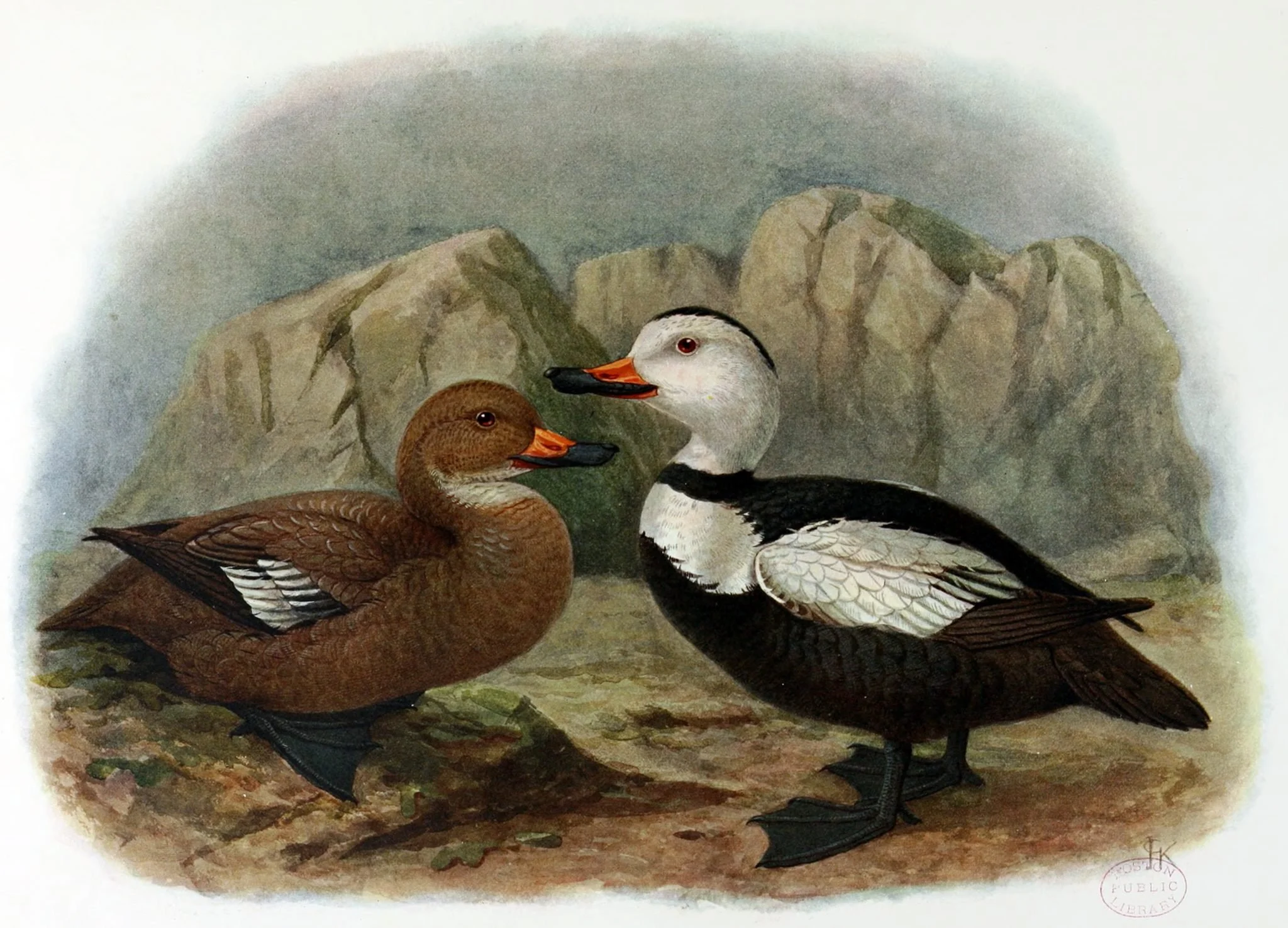Labrador Duck
(Camptorhynchus labradorius)
The Labrador duck was a striking sea duck found only in the western North Atlantic. Males had bold black-and-white plumage, while females were mostly brown, and both sexes featured an orange-and-black bill. The species bred and spent summers along the coasts of Newfoundland, Labrador, and northern Quebec, then migrated south for winter to the shores of New England and the Mid-Atlantic. They occasionally traveled inland, reaching as far as eastern Pennsylvania. Their diet consisted mainly of mollusks, which they collected from the sea floor using a highly specialized bill. Beyond this, due to its early extinction date, its rarity, and the sparsely inhabited areas it spent it summers, little is known about its biology.
Unlike the other species discussed here, the extinction of the Labrador duck wasn’t sudden or obvious. There was likely no single cause, but rather several pressures acting at the same time.
To begin with, the Labrador duck was never abundant, even before its decline, and it likely existed at naturally low population densities. Although it was hunted, it wasn’t a preferred species, as its meat was reportedly unpalatable and spoiled quickly. However, egg collecting and the demand for bird-down may have posed more significant hunting pressures.
Habitat loss also played a major role. Following the Industrial Revolution, rapid growth and development along the eastern seaboard likely displaced the ducks from crucial wintering grounds. As coastal towns and ports expanded, their habitat shrank.
At the same time, the growing human population fueled the commercial shellfish industry. Overharvesting of mollusks reduced the Labrador duck’s primary food source, directly impacting its survival. With less food and less habitat, competition with other sea ducks, such as common eiders, scoters, and long-tailed ducks, intensified. These species were more adaptable and better able to withstand human pressures, while the Labrador duck, with its specialized diet and limited flexibility, simply could not keep up.
In the end, the combination of habitat loss, food scarcity, exploitation, and natural rarity likely pushed the species beyond the point of recovery, with the last confirmed sighting occurring in New York in 1878.



